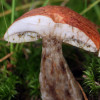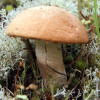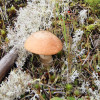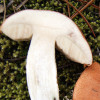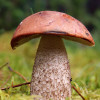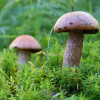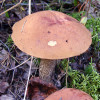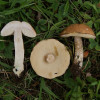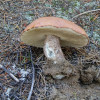Identifying Your Bolete
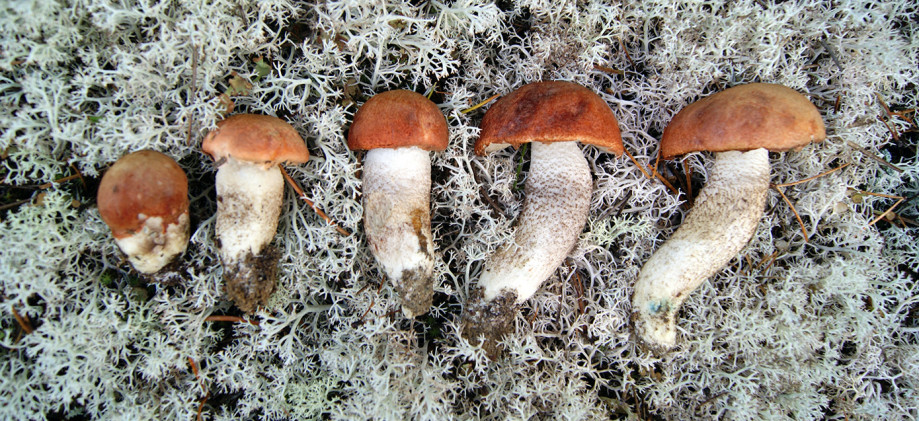
Pores and Pore Surface
Pore surface grayish, staining brownish when bruised; pores small and circular, 3 per mm.
Stalk Feature
Blackish scabers on the stipe, but whitish at first at the top to become blackish thereafter.
Flesh
Whitish, staining purple-gray when cut, colour change is sometimes quick, other times slow, bluish or reddish hues may appear at the base of the stalk.
Basal Mycelium
White.
Chemical reactions
FLESH: the flesh turns black with phenol and formalin, while a pale beige tint is observed with KOH, NaOH, FeSO4 and NH4OH.
CAP-STIPE: towards black with phenol and formalin on cap and stipe, as well as a pale beige color on the stipe with KOH and NaOH; with the other reagents the changes are not obvious.
TUBES: generally black (or gray) with young or mature fruitbodies.
Comments
Send a comment
In dehydrated blends, the six species in this group are generally referred to as Orange-capped Bolete or Spruce Bolete before being marketed.
For more informations











































